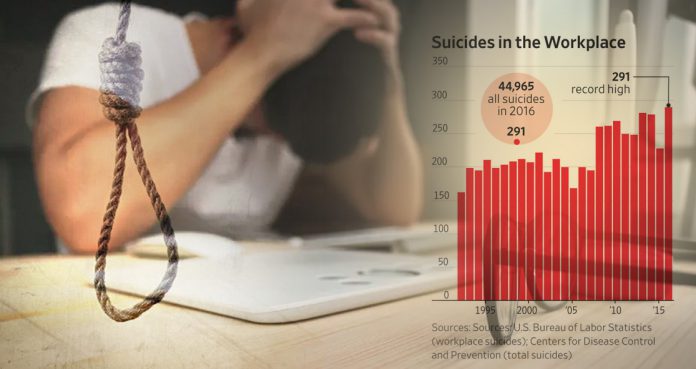In the United States, many people are dying by suicide at the workplace, according to a new report from the Bureau of Labor Statistics.
The report, highlighted by the Washington Post, has noted that as overall workplace fatalities have decreased, the suicide rate increased by 11 percent from 2017 to 2018, totaling to 304 deaths.
In 2019, two highly publicized cases raised awareness related to workplace suicide, especially due to extremely bad working conditions.
First, a Facebook employee took the extreme step by killing himself in the company’s headquarters in September. Second, in December, the former CEO of Orange, a French-based telecom company, was sentenced to jail after he was found guilty of downsizing tactics that caused the suicides of 19 employees from 2008 to 2009.
The report, however, did not try to explain why people are committing suicide at their workplace. And if it continues to rise, organizations will have to do a lot more than just offering mindfulness seminars and meditation space for employees to maintain their good mental health.
Suicide prevention and corporate risk management experts have spurred companies to initiate programs so that employees can get enough support to take care of their psychological health.
The Washington Post reports, “In the wake of such trauma, executives often grapple with what to do: How to counsel and support co-workers and those who witness the death? What to say publicly and how much to disclose internally?”
Director of the National Action Alliance for Suicide Prevention Colleen Carr told the Washington Post, “The hope is someday, mental health will be a routine part of wellness programs at companies, as routine as getting your flu shot or blood pressure taken.”
To address this issue, many leading suicide prevention groups released the first National Guidelines for Workplace Suicide Prevention in 2019. They also launched a website called WorkplaceSuicidePrevention.com.
The website offers a list of “Key Areas for a Healthy Workplace,” such as having generous sick leave, zero tolerance for bullying or discrimination, well-being checks, and other basic ideas on how organizations can treat their employees like people.
A 2019 survey found that there has been a slow yet steady increase in mental health programs at the workplace. The report said, “As U.S. workers continue to report high levels of stress and anxiety, employers are beginning to offer more benefits and solutions specifically targeted at increasing mental wellness.”
The solutions include practical measures, such as good health insurance, fair wages, generous leave policies, and a culture that supports one’s mental health. The article originally appeared on VICE US.























